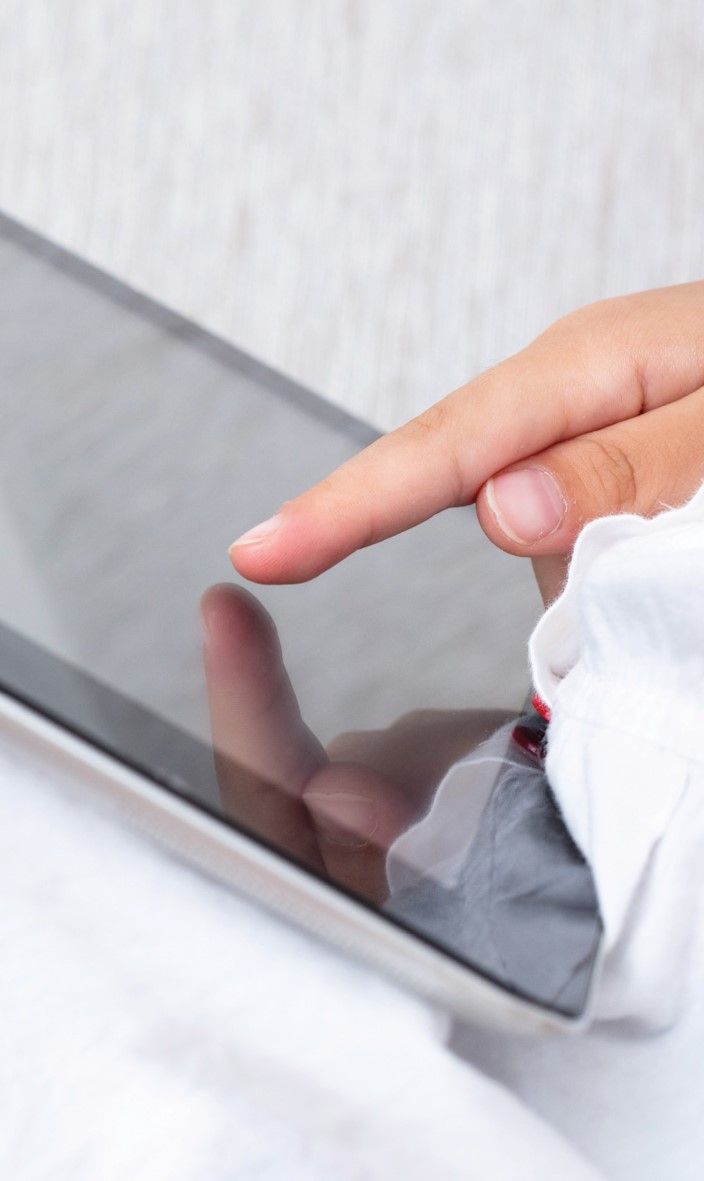
New research has reinforced what Maria Montessori worked out 100 years ago. Finger tracing enhances learning, Sue Osborne writes.
Finger tracing can help improve learning in many different contexts, and at any age. Researchers found finger tracing makes learning faster, easier, and more motivating, and it can help school-age students or even adults tasked with complex maths problems, not just preschoolers learning their letters and numbers.
Back in 1912 Maria Montessori was encouraging young children to trace over letters of the alphabet made from sandpaper with their index fingers, based on the intuition that a multi-sensory approach (that is, visual, auditory, tactile, and kinaesthetic) to learning would be most effective.
Montessori noticed that children, after mastering the sequence of tracing a letter with their index finger, “took great pleasure” in closing their eyes and trying to recall it.
The Montessori approach has a strong emphasis on providing a range of experiences, with the belief that active use of the senses will enable children to classify, discriminate, evaluate and sequence.
Finger tracing with sandpaper is just one aspect of Montessori’s belief that the child’s “absorbent mind” could effortlessly assimilate the sensory stimuli from the environment, including language, culture and the development of concepts (Theories into Practice, 2015).
Sydney University psychologist Paul Ginns believes finger tracing is effective for learning because humans are wired to use their hands from birth.
“Gesturing is such a fundamental part of being human. Babies start using their index finger to poke and prod things, it’s an automatic learning activity,” Ginns said.
“It makes sense that using the finger and your imagination would enhance the brain’s ability to process and memorise information.”
Ginns became interested in this line of research after witnessing a high school student shut his eyes and trace a triangle in the air while trying to solve a geometry puzzle.
“Why would this activity enhance his learning? I was intrigued.” He has pursued this idea in two recent studies (with other researchers) to test his theories on finger tracing.
Study one
In the first study published in Educational Psychology Review, 93 Year 4 and 5 students from a school in Shanghai, China were being taught about the properties of angles in a triangle.
The control group were instructed to leave their arms by their sides. The tracing group traced the shapes, and the tracing/imagination group were instructed to trace the shape with their eyes open, then close their eyes and imagine the tracing.
Following this, all groups completed a 13-item questionnaire that measured motivation and different types of cognitive load during the learning process.
A further experiment investigated whether these findings could be generalised to a new mathematics topic (mental mathematics); a different age group (tertiary students); and an alternative format (tracing out ellipses in difficult ‘mental mathematics’ examples).
A mini meta-analysis combining the results of the two experiments showed that students who traced the shapes solved similar problems faster.
Students who traced also reported lower levels of cognitive load and higher levels of intrinsic motivation during the lesson, compared to those in the control group. In some instances, tracing then imagining resulted in faster solution times for test questions than tracing alone.
Study two
The second study, published in Educational Technology Research and Development, involved adult participants. It considered how instructions to point at and trace over elements of a lesson on the lifecycle of a star on a computer screen would help them learn.
Forty-four people were pre-tested on their knowledge of astronomy, then during the lesson they were instructed to either ‘use their hands’ to make links between text and an associated part of the diagram or to keep their hands in their laps. The first group reported lower cognitive load and higher interest and enjoyment of the lesson.
Importantly, when tested on what they’d learned, students who used their hands while studying not only remembered more basic facts from the lesson but were also able to transfer that understanding to solve problems not directly covered in the lesson.




































































































































